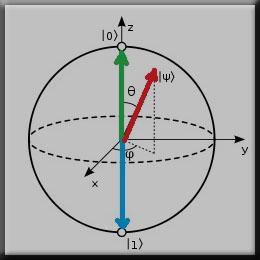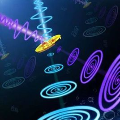Quantum Approximate Optimization Algorithm (QAOA) is one of the leading candidates for demonstrating the quantum advantage using near-term quantum computers. Unfortunately, high device error rates limit us from reliably running QAOA circuits for problems with more than a few qubits. In QAOA, the problem graph is translated into a quantum circuit such that every edge corresponds to two 2-qubit CNOT operations in each layer of the circuit. As CNOTs are extremely error-prone, the fidelity of QAOA circuits is dictated by the number of edges in the problem graph. We observe that majority of graphs corresponding to real-world applications follow the ``power-law`` distribution, where some hotspot nodes have significantly higher number of connections. We leverage this insight and propose ``FrozenQubits`` that freezes the hotspot nodes or qubits and intelligently partitions the state-space of the given problem into several smaller sub-spaces which are then solved independently. The corresponding QAOA sub-circuits are significantly less vulnerable to gate and decoherence errors due to the reduced number of CNOT operations in each sub-circuit. Unlike prior circuit-cutting approaches, FrozenQubits does not require any exponentially complex post-processing step. Our evaluations with 5,300 QAOA circuits on eight different quantum computers from IBM shows that FrozenQubits can improve the quality of solutions by 8.73x on average (and by up to 57x), albeit utilizing 2x more quantum resources.
翻译:量子近似优化算法(QAOA)是展示使用近期量子计算机获得量子优势的主要候选方法之一。不幸的是,高设备误差率限制了我们可靠地对拥有多个量子位的问题运行QAOA电路。在QAOA中,问题图被转换为一个量子电路,使每个边缘对应于每个电路层中的两个2量子位CNOT操作。由于CNOT非常容易出错,QAOA电路的保真度取决于问题图中边的数量。我们观察到,大多数对应于真实世界应用的图遵循“幂律”分布,其中一些热点节点具有显着更高的连接数。我们利用这个洞见,提出了“FrozenQubits”,冻结热点节点或量子位,并智能地将所给问题的状态空间分成若干小子空间,这些子空间然后独立求解。由于每个子电路中CNOT操作数量减少,对应的QAOA子电路的门和退相干错误明显减小。与先前的电路分割方法不同,FrozenQubits不需要任何指数复杂的后处理步骤。我们在IBM的八台不同量子计算机上进行评估,使用5,300个QAOA电路,结果显示FrozenQubits可以平均提高解决方案的质量8.73倍(最高可达57倍),但需使用两倍的量子资源。



